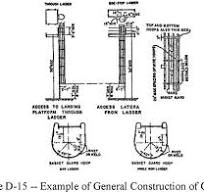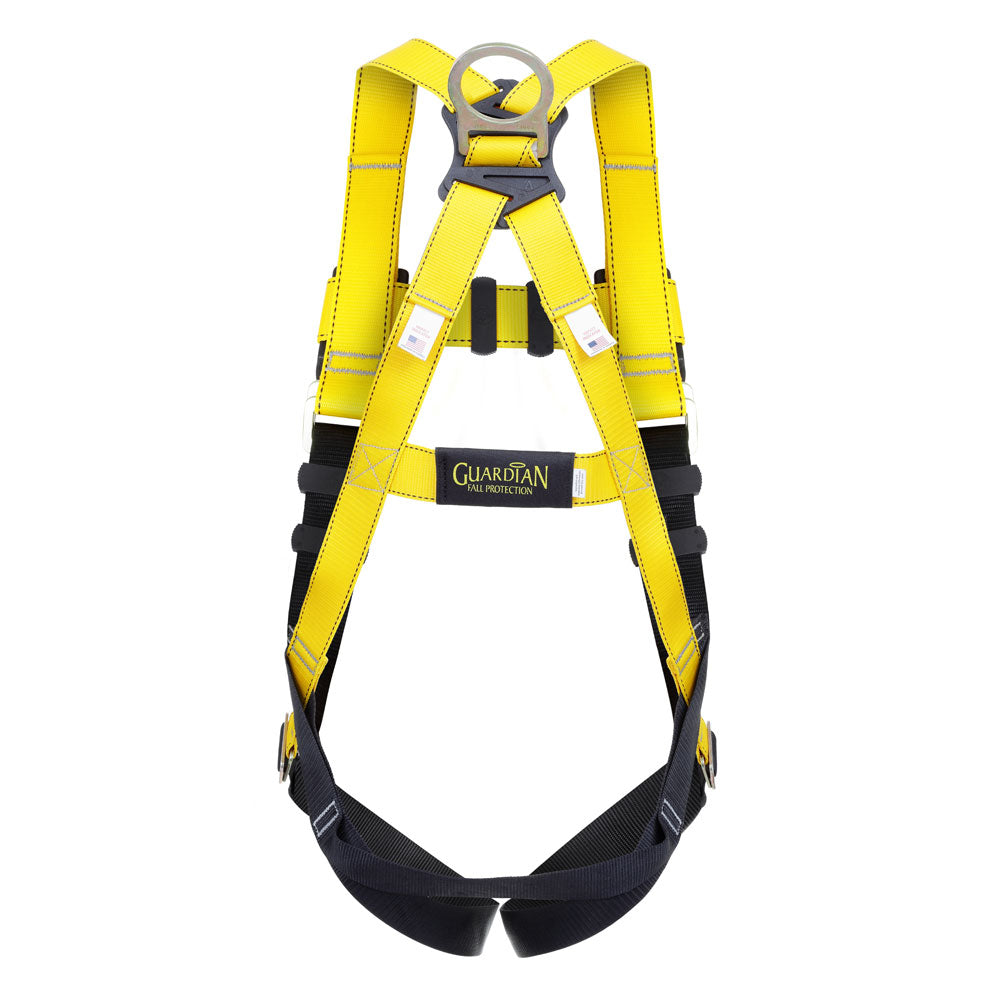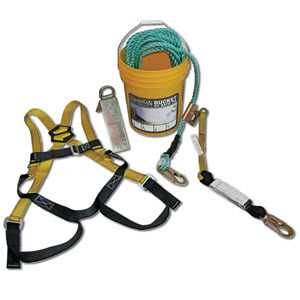Understanding OSHA Standard 1910.28: Safety Requirements for Working at Heights
Occupational Safety and Health Administration (OSHA) Standard 1910.28, titled “Duty to have Fall Protection and Falling Object Protection,” sets forth safety requirements for employers and workers when working at heights. This standard aims to prevent falls and protect workers from potential hazards in the workplace.
Key Provisions of OSHA Standard 1910.28
OSHA Standard 1910.28 mandates that employers must provide fall protection systems for employees working at heights of four feet or more in general industry workplaces. Some key provisions of this standard include:
- Guardrail Systems: Employers are required to install guardrail systems along open-sided platforms, runways, or walkways that are elevated four feet or more above the ground.
- Toeboards: Toeboards must be installed on all open sides of platforms, runways, or walkways to prevent objects from falling to lower levels.
- Fall Arrest Systems: When guardrail systems are not feasible, employers must provide personal fall arrest systems, safety nets, or other appropriate measures to protect workers from falls.
- Hole Covers: Employers must ensure that all floor holes are securely covered or guarded to prevent workers from falling through them.
Compliance with OSHA Standard 1910.28
To comply with OSHA Standard 1910.28, employers should assess their workplaces for potential fall hazards and implement appropriate safety measures. This may include conducting regular inspections of guardrail systems, providing adequate training on fall protection equipment, and ensuring that workers follow proper safety protocols when working at heights.
Importance of OSHA Standard 1910.28
Falls from heights are a leading cause of workplace injuries and fatalities. By adhering to OSHA Standard 1910.28, employers can create a safer work environment and protect their employees from serious injuries resulting from falls. Compliance with this standard not only ensures worker safety but also helps companies avoid costly fines and penalties for non-compliance.
In conclusion, OSHA Standard 1910.28 plays a crucial role in promoting workplace safety and preventing falls when working at heights. Employers must prioritize compliance with this standard to protect the well-being of their workforce and maintain a secure work environment.
Understanding OSHA Standard 1910.28: Key FAQs on Fall Protection and Workplace Safety
- What is OSHA Standard 1910.28?
- Who does OSHA Standard 1910.28 apply to?
- At what height does OSHA Standard 1910.28 require fall protection?
- What are the key requirements of guardrail systems under OSHA Standard 1910.28?
- When is toeboard installation necessary according to OSHA Standard 1910.28?
- What fall protection systems are acceptable alternatives when guardrail systems are not feasible?
- How should employers ensure compliance with hole cover requirements in OSHA Standard 1910.28?
- Why is compliance with OSHA Standard 1910.28 important for workplace safety?
- What steps can employers take to prevent falls and comply with OSHA Standard 1910.28?
What is OSHA Standard 1910.28?
OSHA Standard 1910.28, titled “Duty to have Fall Protection and Falling Object Protection,” is a regulation established by the Occupational Safety and Health Administration (OSHA) to address safety requirements for working at heights in various industries. This standard mandates that employers must provide fall protection systems for workers operating at heights of four feet or more to prevent falls and protect against potential hazards in the workplace. OSHA Standard 1910.28 outlines specific guidelines regarding guardrail systems, toeboards, fall arrest systems, and hole covers to ensure a safe working environment and reduce the risk of injuries resulting from falls. Compliance with this standard is essential for promoting workplace safety and minimizing accidents related to working at elevated levels.
Who does OSHA Standard 1910.28 apply to?
OSHA Standard 1910.28 applies to employers in general industry workplaces where employees are exposed to fall hazards. This standard is designed to protect workers who perform tasks at heights of four feet or more above the ground. Employers in various industries, such as manufacturing, construction, and warehousing, must comply with the requirements outlined in OSHA Standard 1910.28 to ensure the safety of their employees working at elevated levels. By establishing guidelines for fall protection and falling object protection, this standard aims to reduce the risks associated with working at heights and prevent workplace injuries resulting from falls.
At what height does OSHA Standard 1910.28 require fall protection?
OSHA Standard 1910.28 requires fall protection to be provided for employees working at heights of four feet or more in general industry workplaces. This means that whenever workers are operating at a height of four feet or higher above the ground, employers must ensure the implementation of appropriate fall protection measures to prevent potential accidents and injuries. Compliance with this height requirement is essential to promote workplace safety and protect workers from the risks associated with falls in the workplace.
What are the key requirements of guardrail systems under OSHA Standard 1910.28?
Under OSHA Standard 1910.28, the key requirements of guardrail systems include the installation of guardrails along open-sided platforms, runways, or walkways that are elevated four feet or more above the ground. These guardrail systems serve as a protective barrier to prevent falls and ensure worker safety. Additionally, toeboards must be installed on all open sides of elevated platforms to prevent objects from falling to lower levels. Employers are responsible for ensuring that guardrail systems meet specific height and strength requirements outlined in the standard to effectively protect workers from potential fall hazards.
When is toeboard installation necessary according to OSHA Standard 1910.28?
According to OSHA Standard 1910.28, toeboard installation is necessary when working at heights where there is a risk of objects falling to lower levels. Specifically, toeboards must be installed on all open sides of platforms, runways, or walkways that are elevated four feet or more above the ground. Toeboards serve as a crucial safety measure to prevent objects from accidentally falling and causing harm to workers or individuals below. By ensuring the proper installation of toeboards in accordance with OSHA regulations, employers can enhance workplace safety and minimize the risk of potential hazards associated with working at elevated heights.
What fall protection systems are acceptable alternatives when guardrail systems are not feasible?
When guardrail systems are not feasible in a workplace setting, OSHA Standard 1910.28 provides guidelines for acceptable alternative fall protection systems to ensure worker safety. These alternatives include personal fall arrest systems, safety nets, and other appropriate measures that can effectively prevent falls from heights. Employers must assess the specific work environment and determine the most suitable alternative fall protection system to mitigate the risk of falls when guardrails are not a viable option. By implementing these acceptable alternatives in accordance with OSHA regulations, employers can safeguard workers and maintain a secure working environment.
How should employers ensure compliance with hole cover requirements in OSHA Standard 1910.28?
Employers can ensure compliance with the hole cover requirements in OSHA Standard 1910.28 by implementing several key measures. Firstly, employers should regularly inspect all floor holes to identify any potential hazards and ensure that they are securely covered or guarded at all times. Employers should also provide proper training to employees on the importance of hole covers and safe practices when working near floor openings. Additionally, establishing clear procedures for reporting damaged or missing hole covers and promptly addressing any issues that arise is crucial to maintaining compliance with OSHA regulations. By prioritizing regular inspections, employee training, and proactive maintenance protocols, employers can effectively meet the hole cover requirements outlined in OSHA Standard 1910.28 and promote a safer work environment for their workers.
Why is compliance with OSHA Standard 1910.28 important for workplace safety?
Compliance with OSHA Standard 1910.28 is crucial for workplace safety as it sets forth essential safety requirements to prevent falls and protect workers when working at heights. By adhering to this standard, employers can create a secure work environment that minimizes the risk of serious injuries resulting from falls. Ensuring compliance with OSHA Standard 1910.28 not only safeguards the well-being of employees but also helps companies avoid potential fines and penalties for non-compliance. Prioritizing adherence to this standard demonstrates a commitment to maintaining a safe workplace and promoting a culture of safety within the organization.
What steps can employers take to prevent falls and comply with OSHA Standard 1910.28?
Employers can take several proactive steps to prevent falls and ensure compliance with OSHA Standard 1910.28. Firstly, conducting a thorough assessment of the workplace to identify potential fall hazards is crucial. Employers should then implement appropriate fall protection measures such as installing guardrail systems, toeboards, and personal fall arrest systems where necessary. Providing comprehensive training to employees on proper equipment usage and safety protocols is essential. Regular inspections of fall protection systems and ongoing safety education can help maintain a safe working environment and prevent falls, thus aligning with OSHA Standard 1910.28 requirements.




